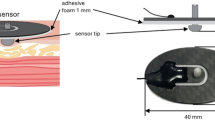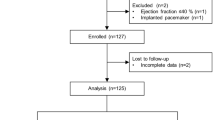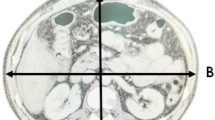Abstract
Background:
To analyze the effects of transitory, high intra-abdominal pressure on clinical, hemodynamic, blood gas and metabolic parameters.Methods: Sixty-seven laparoscopic patients were divided into groups P12 (n = 30, maximum intra-abdominal pressure of 12 mmHg) and P20 (n = 37, maximum intra-abdominal pressure of 20 mmHg). Through radial artery cannulation, mean arterial pressure (MAP) was assessed and blood gas analysis – pH, arterial oxygen tension (PaO2), arterial carbon dioxide tension (PaCO2), bicarbonate (HCO3) and base excess (BE) – was performed. These parameters were evaluated in both groups at time point zero, before CO2 insufflation; at time point one (TP1), when intra-abdominal pressure of 12 mmHg was reached in both groups; at time point two (TP2), 5 minutes after reaching intra-abdominal pressure of 12 mmHg in group P12 and of 20 mmHg in group P20; and at time point three (TP3), 10 minutes after reaching intra-abdominal pressure of 12 mmHg in group P12 and 10 minutes after TP1 in group P20, when intra-abdominal pressure decreased from 20 mmHg to 12 mmHg. Values out of the normal range or the occurrence of atypical phenomena suggestive of organic disease indicated clinical changes.
Results:
Significant variations in MAP, pH, HCO3 and BE were observed in group P20; these changes, however, were within normal limits. Clinical changes were also within normal limits, and no pathological phenomena were observed.
Conclusions:
Brief, intra-abdominal hypertension for the insertion first trocar insertion causes variations in MAP, pH, HCO3 and BE without adverse effects, and it may protect from iatrogenic injury.
Similar content being viewed by others
Article PDF
Author information
Authors and Affiliations
Corresponding author
Rights and permissions
About this article
Cite this article
Miyahira, S., Miguel, G., Azevedo , G. et al. Invasive monitoring of the clinical effects of high intra-abdominal pressure for insertion of the first trocar.. Nat Prec (2011). https://doi.org/10.1038/npre.2011.6536.1
Received:
Accepted:
Published:
DOI: https://doi.org/10.1038/npre.2011.6536.1



